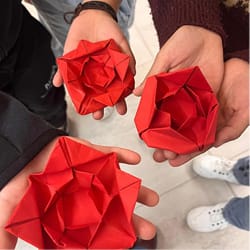A great thing about this amazing city is that many beautiful museums in London are free.
The Science Museum and the Natural History Museum of London are free for everyone for instance, both young and old.
In which other city in the world can you visit the best museums and art galleries without paying anything?
I believe it only happens in London, one more reason to love this place.
The Natural History Museum of London is larger than the Science Museum and will require more time to visit but they are adjacent so it’s possible to visit both in one day.
My advice is, if you have time, to visit one museum a day and the other one another day, also to have enough time to visit the Diana Memorial Playground, the playground in Kensington Park dedicated to the memory of Princess Diana, especially if you visit with kids.
You can get there in a few minutes on foot from the two museums and, in addition to the pond and the playground, there are lots of squirrels peeping out between the flowerbeds and the feet of passers-by, not at all frightened by the passers-by.
The prestigious building of the Natural History Museum is impressive: more similar to a church than a museum, as soon as you enter you get as excited as a child climbing the escalator that enters the center of the Earth.
Then when you immerse yourself in the Red Zone dedicated to volcanoes and earthquakes, among videos of incandescent lava, various multimedia stations complete with a simulator that reproduces the effects of the earthquake that occurred in Japan in 1995, you understand that the visit will be long but fun.
There are several dinosaur skeletons and they are all fascinating, as are the enormous fossils that seem fake due to how perfect they are.
You will find the dinosaurs in the Blue Zone which is the main attraction of the museum together with the section dedicated to mammals.
On the first floor, the Green Zone hosts a fragment of rock from the moon, minerals, a meteorite from Mars and the largest emerald in the world.
The Science Museum of London, located like many other important museums in the city on Exhibition Road, is the most visited science and technology museum in Europe although it is an institution dating back to the Victorian era and initially dedicated to the arts.
This museum today has a predominantly educational focus and is dedicated to children and, like many other public museums in London, it can be visited completely free of charge.
The Science Museum houses real pieces of human history such as the Apollo 10 command post, one of the oldest steam locomotives ever built and some of the first steam engines in history.
The Museum is characterized by a highly interactive, educational and playful approach, which aims to bring to life not only historical but also contemporary scientific advances, to make them understood by children: it is the ideal museum to visit with kids, but it is very interesting even for the adults.
Among the most exciting activities offered by the museum are the 3D simulators, which reproduce numerous scenarios on gigantic IMAX screens.
The 3D films scheduled include simulations of trips to the moon, reconstructions of the human body, impressive reproductions of earthquakes and volcanoes, but also simulations of alien planets and nature documentaries on the deep sea and the bizarre creatures that inhabit it.
The five floors of the museum are all to be explored: the museum is designed to intrigue visitors and encourage them to browse around and interact with many objects on display.
On the ground floor there are reconstructions dedicated to the objects that contributed to the industrial revolution of the new world.
On the first floor, you can find areas dedicated to agriculture, but also sections on the history of telecommunications and time measurement.
On the second floor there are the sections dedicated to computers, mathematics and energy.

Science museum, transports room
On the third floor you will find an interesting exhibition on Science as well as collections of objects relating to transportation and flight, including helicopters and entire airplanes.
The fourth floor is entirely dedicated to the history of medicine, and includes fascinating and often bizarre medical artifacts from the past that retrace the stages of medicine.
The fifth floor, dedicated to the relationship between science and medicine, includes an overview of medical instruments and healing practices practiced in the past in many cultures around the world.
This Museum also includes a library, which preserves and manages periodicals, ancient scientific manuscripts, and is used by scholars from all over the world, really worth the visit.






























































